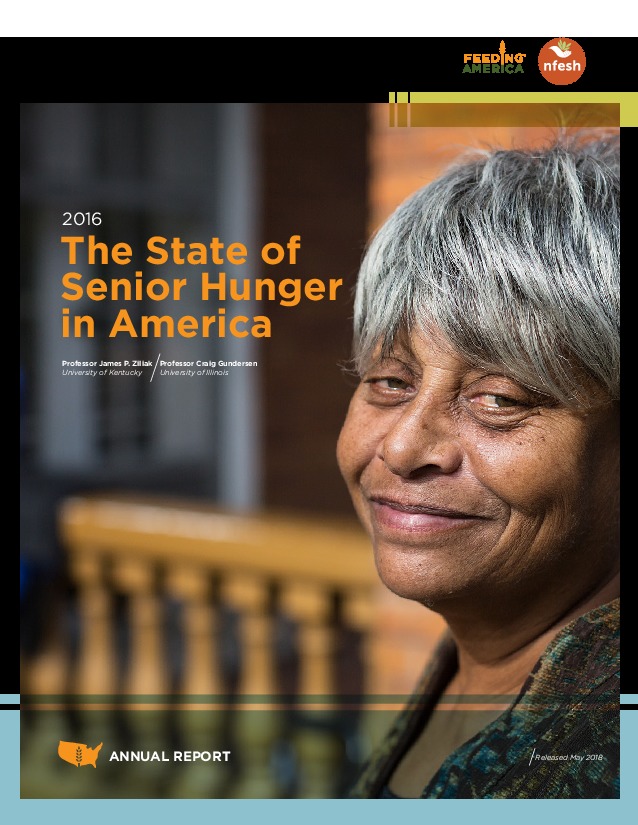In the annual report for calendar year 2016, we find that: 13.6% of seniors are marginally food insecure, 7.7% are food insecure, and 2.9% are very low food secure. This translates into 8.6 million, 4.9 million, and 1.8 million seniors, respectively. From 2015 to 2016, there were statistically significant declines in the percentage of marginally food-insecure seniors. However, there were no statistically significant changes in food insecurity or very low food security. Looking at demographic categories, there were sizable and statistically significant declines for several categories among the marginally food insecure; however, only two groups – those with incomes above 200% of the poverty line and white seniors—experienced significant declines in food insecurity. Across all three measures, from 2014 to 2016 there were statistically significant declines of 2.2 percentage points, 1.2 percentage points, and 0.5 percentage points for marginal food insecurity, food insecurity, and very low food security. Compared to 2001, the fraction of marginal food insecure, food insecure, and very low food secure seniors increased by 27%, 45%, and 100%. The number of seniors in each group rose 90%, 113%, and 200%, which also reflects the growing population of seniors.
Research
SeniorsPDF Thumbnail
